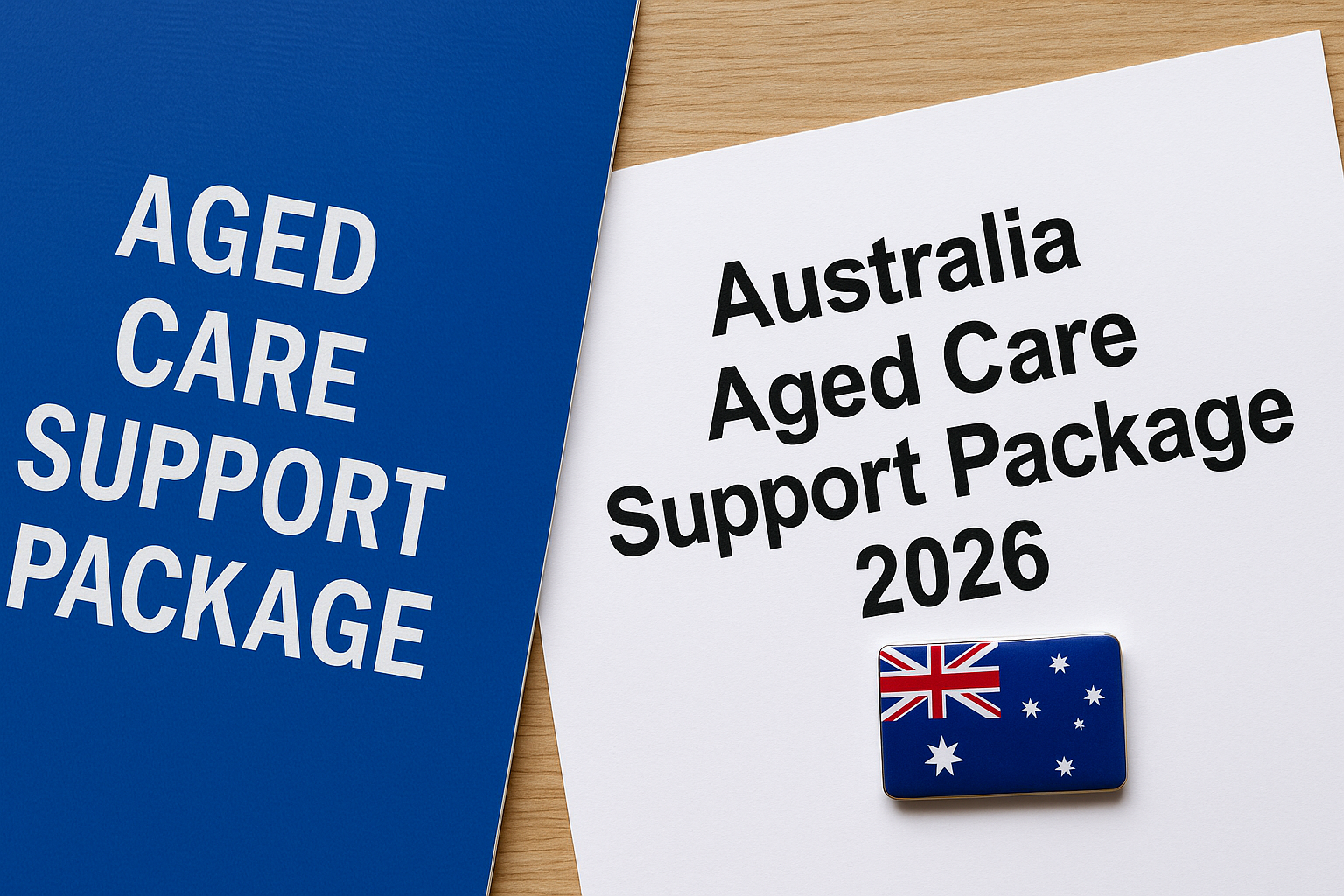Australia is rolling out major aged care reforms from 1 November 2025, which will continue into 2026. The centerpiece is the new Support at Home program, replacing previous home care systems to provide better in-home support, more flexible funding, clearer categories of care, and fairer contributions.
What Is the Support at Home Program?
- From 1 November 2025, the Support at Home program replaces the Home Care Packages (HCP) and Short-Term Restorative Care (STRC) programs.
- The Commonwealth Home Support Programme (CHSP) will continue until at least 1 July 2027, when it also transitions into Support at Home.
- Key focus: helping older Australians stay in their homes longer by providing services based on assessed needs, early intervention, and greater options.
Key Changes from 2026
| What Changes | Old System (HCP / STRC) | New System (Support at Home) |
|---|---|---|
| Number of classifications | 4 levels of HCP, STRC separate | 8 ongoing classifications plus short-term pathways (Restorative Care, End-of-Life) |
| Budget management | Annual or ongoing HCP budget | Funds allocated quarterly; some carry-over allowed (up to 10% or set cap) |
| Assistive tech & home mods (AT-HM) scheme | Patchy access | Defined AT-HM scheme, separate funding for assistive tech / home modifications |
| Service categories | Less clearly segmented | Three categories: Clinical, Independence, Everyday Living with different contribution levels |
| Pricing of services | Providers set price | From 1 July 2026, government-set price caps on services; earlier, providers have more flexibility |
| Contribution / fees | Based on certain income / pension rules | More nuanced contributions based on income, assets, pension status. Full pensioners often pay less; assessment required. |
What It Means for You
- No worse off guarantee: If you were receiving a Home Care Package, awaiting one, or assessed eligible for one before 12 September 2024, you will be transitioned into Support at Home without paying more than you do currently in many cases.
- Assessment requirements: You’ll need an aged care needs assessment, using tools like the Integrated Assessment Tool (IAT) under the Single Assessment System, to determine your classification and budget.
- Earlier interventions & extra pathways: More early supports (e.g. assistive devices, home mods), and short-term pathways to restore or maintain independence (Restorative Care); plus a pathway for end-of-life care for those with under 3 months to live.
Frequently Asked Questions (FAQ)
1. When does Support at Home fully kick in?
The program starts on 1 November 2025 for replacing HCP & STRC. CHSP will transition in by 1 July 2027.
2. Will I need to be reassessed if I already get Home Care?
No, unless your care needs change. Those with current HCP or approved status before the key date will retain an equivalent budget.
3. How much will I contribute under the new system?
It depends on your pension status, income, assets, and type of service (clinical, independence, everyday living). Full pensioners may have low contributions; others will pay more where applicable.
4. What about costs / contribution caps?
There is a lifetime cap of $130,000 on non-clinical care contributions. Also, service provider fees will be capped starting from 1 July 2026.
5. Will wait times improve?
The expectation is yes, especially for urgent care or higher-priority cases, though initially some wait lists may transfer over from existing programs.
Key Takeaway
Australia’s aged care overhaul through the Support at Home program arriving in late 2025 and growing into 2026 is a major shift. It promises more flexibility, earlier support, clearer service categories, fairer contributions, price caps, and better tools to help older Australians stay in their homes.
If you or someone you care for receives aged care services, now is a good time to:
- Check your current care classification and budget.
- Understand what you contribute now so you can compare after the changes.
- Be aware of the assessment process and how it may affect your future services.




